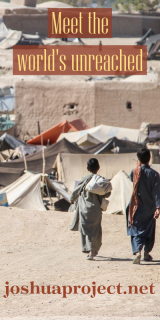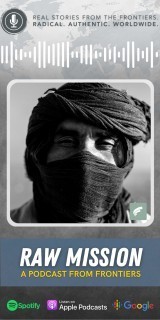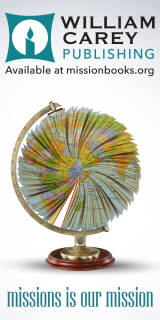Go and Heal to Proclaim the Good News!
The Place of Medical Work in Christian Missions

About 200 years ago, Christians engaged in foreign missions discovered a mighty means for making known the gospel to the world. This means was medical missions. Up until then the common practice of missions was to go out into the world, proclaim and teach the Good News and to receive new believers into the Church through baptism. From the middle of the 19th century however, when the healing art became truly effective enabling safe surgery and combating, even eradicating diseases which plagued humanity since the days of creation, pious physicians perceived this as a godsend.
Beginnings
"God’s Hand in Medical Missions" was the title of an article published in London in 1914 stating:
The great mission work to the world had begun, but it was progressing very slowly. It needed what the medical art in service to Christ could alone give. But mark this: if the medical and surgical art had remained as it stood [that is, in 1840] ... the assistance rendered by it to the mission work of the world would have been comparatively very limited.
... Today the medical missionary has in his hands a marvelously increased knowledge of the pathology and treatment of a great variety of diseases … This constantly increasing knowledge has made the position of the medical missionary one of singular value for the propagation of the gospel.
Already years before, in 1887 mission enthusiasts of the Student Volunteer Movement stirred by the watchword “The evangelization of the world in this generation!” hailed medical missions as the most suitable means to achieve that goal. Their call for medical missions gives an idea of the power ascribed to this venture: “The increase of the heathen population has been so rapid that evangelization has not kept pace with it, much less surpassed it. Evidently more effective means must be employed to evangelize the world. We believe that the means must largely consist in reaching the soul through the healing of the body, and the following reasons confirm our belief:
1. it was Christ’s method.
2. it was Christ’s command to his disciples.
3. it was the apostolic method.
4. medical missions economize time.
5. medical missions economize funds.
6. medical missions can do the most work in the shortest time, because they are the best introducers of the gospel
As much as one might appreciate the excitement and vision expressed in these words, we must also ask, if those reasons given for engaging in medical missions are sound. While it is true that Jesus and the Apostles healed, it cannot be said that healing was the Lord’s or the apostolic “method.” Jesus healed because He was God incarnate, unlike the Buddha, Lao-Tse, Moses, Confucius, or Mohammed. As God incarnate Jesus could do no other than permeate all facets of life with His lifegiving word by proclaiming: “I have come that they may have life, and have it abundantly!” (John 10:10) Christ’s healingministryisnotamethod. It, rather, indicates the corporeality of salvation which came into the world in Him.
Jesus sent out His disciples “to proclaim the kingdom of God and to heal” (Lk. 9:20), promising them “by using My name” you “will cast out demons … and lay hands on the sick, and they will recover” (Mark 16:17–18). The Acts of the Apostles show that this was no empty promise as recorded in Acts 3:1–10; 5:122–16; 8:6-8; 9:17, 32–43, etc. Paul was also aware of healing as a “gift of the Spirit” (I Cor. 12:9), and the letter of James says that “the prayer of faith will save the sick” (James 5:15). Yet, unlike Christ the disciples “could not heal” always (Matt. 17:16) despite honest attempts (see Mark 9:18; Luke 9:40). Given that healing was not at their disposal, they could not employ it as a method.
Further, history has disproved the thesis that medical missions economize time and funds. Keeping qualified staff and equipping facilities according to required standards to provide reliable medical services necessitates huge and ever- increasing funds, which faith-based not-for-profit organizations don’t have. Likewise, the assumption that “medical missions can do the most work in the shortest time” is correct only when looking at first contacts as figures from surveys confirm. In 1900 there were 770 missionary physicians in the field. They represented roughly five percent of the total of 12,837 missionary personnel but had 2,545,503 initial contacts compared to 1,127,853 by all other missionaries, which is more than 50%. Since every medical missionary related on average with a population 11 times the number of their nonmedical colleagues, a prominent missionary leader in the UK dubbed medical missions as “the heavy artillery of the missionary army.” Yet most people once they are healed, do not return to the hospital or the healer but go home to pursue business as usual as did nine of the ten lepers (Luke 17:11-19). The observation that “in 12 years of the operation of the Medical Missionary Society in Canton, there were a mere 12 converts from a total of 409,000 patients” also disproves the claim of medical missions doing “the most work in the shortest time.” Treatment of patients is not geared at establishing local churches. Church-planting is alien to the medical task. That is why medical missionaries vehemently objected to the view of their work as a means to an end. Those toiling in China, by far the largest group then, protested: “Medical missions are not to be regarded as a temporary expedient for opening the way for, and extending the influence of the gospel, but as an integral, co-ordinate and permanent part of the missionary work of the Christian Church.”
Developments
The overall situation of Christian medical missions work has changed dramatically since the emergence of a new global order in the aftermath of two devastating world wars and former colonies becoming independent, autonomous nations. The convenience of air travel accelerated and the ready availability of the internet quickened globalization at all levels. Today the World Health Organization (WHO), national healthcare services and numerous secular health-care organizations have taken over much of the work once done by Christian medical missions, at least nominally. Why, then, continue such work? To fill in the gaps left by other healthcare providers? As philanthropic agencies?
To address these questions aired by many in the field the World Council of Churches (WCC) and the Lutheran World Federation (LWF) convened in 1964 a week-long conference of experts at Tübingen, Germany. Contrary to what participants expected beforehand, namely, to let go of medical work in missions, one of them reported afterwards, that the “consultation discovered in a quite unplanned way that to ask whether or not the time has come for the Church to surrender its work in medicine … is to ask a theological question.” Before, “consultation participants leaned in the direction of the Church withdrawing from areas of healing now strongly occupied by the state.” But “the consultation was led to articulate the belief that ‘the Christian Church has a specific task in the field of healing’” which cannot be surrendered “to other agencies” because healing is “an integral part of its witness to the gospel,” and an expression of salvation. The findings of that conference, published and disseminated globally through the respective networks, resonated well with almost everyone in the field, because they addressed the decisive challenge. In which way can medical missions as an agency of healing be an integral part of Christian missions?
Healing and Salvation
Physicians aim at curing diseases by stimulating an imperiled living system with appropriate medication or surgery (or a combination of these) in such a way that the system regenerates itself. When the therapy is successful this results in healing, when not, death sets in. The dependency upon the self-regenerating power of the living system accounts for the religious dimension in all healings and makes the work of doctors a work of hope; even the most sophisticated treatment and top expert knowledge cannot vouch that the outcome will be successful. All medical therapy is based on hope, not on blind hope to be sure, but on hope informed by knowledge about the nature of the living system aided by professional expertise and personal experience. Such hope is not unfounded, because healing is a basic phenomenon of life. Without healing, life cannot flourish. Life thrives because God sustains it continuously as happens for example in the repair of damaged DNA in our body cells several thousand times each day (!) without our even noticing. Healing is a manifestation of God’s ongoing creation.
It discloses God’s doings, as Jesus explained to his disciples when healing a boy born blind: “He was born blind so that God’s works might be revealed in him” (John 9:3).
The skillful use of medicine within the context of organized Christian missions to bring about healing and prevent untimely death might be seen by many as a gesture of charity and a philanthropic act while those who regard the saving of souls as the proper and only business of mission tend to discard such work as not essential. Conventional missionary efforts every so often reduce the proclamation of the Good News to acts of verbal communication and emotional arousal. This attitude is owed to a view of the human being not originating from Scripture but from philosophical speculation, which perceives the human person as a composite of body and soul (or body, mind and spirit), valuating the soul/mind as more precious than the body. Thus, the main task of mission is understood to consist in saving souls from eternal damnation. Most missionaries past and present hold on to the soul-body divide, too. However, one among them, who was not only deeply immersed in the evangelical revival of the 19th century but a physician, too, challenged this conviction dramatically. Anyone responding negatively to the “claim of suffering,” either because of indifference or by focusing solely on the spiritual wellbeing of the diseased, would have the deaths of “murdered millions” on their consciences as George D. Dowkontt, author of a book by that very title, explained in 1897:
While people discuss and question regarding the future of the heathen, they would do well, yes, better, to interrogate concerning the future prospects of those who, having the gospel for their spiritual needs, and medical science for their physical ills, enjoy the blessings of the same, but fail to send or give them to their needy fellow creatures ... Thus, do they [the needy fellow creatures] perish by our neglect. Who is responsible for these lives if not those who could help them, but do not? Surely such are the murderers of these millions. To merely talk piously and tell suffering people of a future state, while neglecting to relieve their present needs, when in our power to do so, must be nauseating both to God and man, … Christ … combined care for the whole being of man, body, and soul.
One might think that this call got a hearing, because on occasion of the Ecumenical Missionary Conference in New York three years later it was stated that “no mission can be considered fully equipped that has not its medical branch.
However, only 37 of the 128 North American mission societies active at the turn to the 20th century were engaged in medical missions, of the 154 British societies only 45, and of the 82 continental societies a mere 14. The overwhelming majority of mission boards and agencies regarded such ministry as irrelevant—and does so still.
Those holding this view not only ignore Paul’s declaration that “we wait for … the redemption of [not “from”!] our bodies” (Rom. 8:23). They also overlook the fact that the souls to be saved exist in corporeality only, not as disembodied entities. Equally, when physicians treat patients, they never care just for diseased bodies as insinuated by the reductionistic rational-scientific approach they are trained in. Doctors always treat corporeal people, that is people with a distinctive personal biography each living in different mental, emotional and social contexts. This dense reality of human life has to be addressed and meaningfully related to when proclaiming the gospel. It is medical missions which does this unlike any other agency because they proclaim the Good News most comprehensively by witnessing to the corporeality of salvation in Christ.
Besides bringing healing to the neglected in even the remotest of places as “heralds of health” one of the specific tasks of Christian medical missions is to safeguard the proclamation of the gospel against its spiritualized and verbal attrition. In attempting to make the gospel become an experienceable bodily reality through healing, medical missionaries guard against unbiblical disembodied erosions of the Good News, a danger often not realized but present since the early days of the Church. By pointing to God’s creation, the incarnation and bodily resurrection, North African church father Tertullian (ca. 160-220) alerted already in the third century to this lingering danger when asserting: “The body is the pivot of salvation!” More than one and a half millennia later John R. Mott saluted “medical missionary work” as “the climax of the integrity of [the] all-inclusive gospel” because “it gives us the most vivid apprehension of the real meaning of the incarnation and likewise the life of our Lord and Savior.”
Since all healing comes from God, every healing is a potential encounter with salvation regardless of whether it happens in a Christian setting or outside the Church. Within the context of Christian missions, however, those dealing with patients will make the potential encounter with God’s saving grace become an actual one. But how? Should medical missionaries preach? In the past some of them did like Dr. Dyer Ball (1796-1866) in Canton, China, and Dr. Mary Pierson Eddy (1864-1923) in Syria. Dr. Robert Raid Kalley (1809-1888) not only became the nucleus of revivals on the island of Madeira and in Brazil but became also instrumental in founding the Igreja Evangélica Fluminense, the oldest Protestant church in Brazil. Dr. Andrew Park Stirrett (1902-1948) working among the Hausa in Nigeria is said to have preached “not less than 20,000 times sermons that were heard by not less than 1,500,000 people.” But most medical missionaries overwhelmed by the never-ending queue of sufferers seeking their help and bound to attend to medical emergencies day by day will simply not find additional time and added strength for engaging in preaching or extra evangelistic activities. They need not, because their entire work is saturated with preaching. It is their dedication and commitment to the work, their personal piety, their professional excellence, their way of interacting with team-members, their attention to and their care of patients, their taking part in church life, their praying with the people of God and being prayed for by the people of God as members of the body of Christ. They proclaim the Good News not without but beyond words—as Jesus did once.
Note: Sources of the quotes above - and much more - can be found in Chr. H. Grundmann, Sent to Heal! Emergence and Development of Medical Missions, Lanham, MA: University Press of America 2005; 375 pp. ISBN 0-7618-3319-6








comments